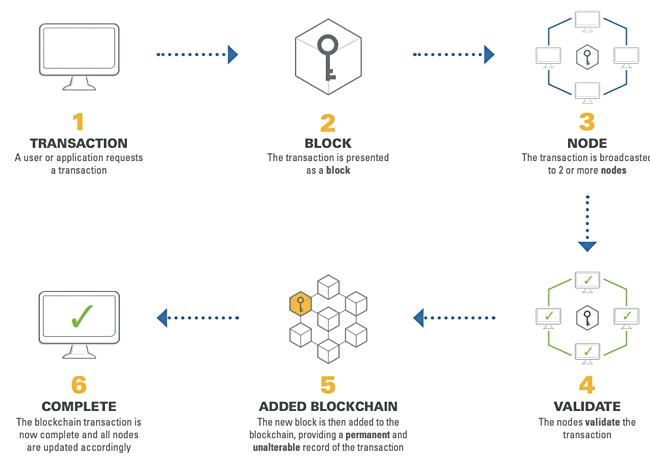Nexsan today announced a dense flash addition to its mid-range E-Series array and also added fast RoCE access and blockchain security to the Assureon archive line.
Mihir Shah, CEO of StorCentric, which owns Nexsan, issued a quote saying the new E-Series has the “best cost/performance ratio in the market. [It] is one of the many new products we plan to announce in the next few months as we execute on our 2020 strategy.”
Surya Varanasi, CTO of StorCentric, said: “With the release of Assureon 8.3, we have implemented RoCE to provide over a 2x performance improvement and private blockchain technology for a secure, immutable data structure.”
There are three Nexsan array lines – Unity, E-Series and Assureon, all designed for medium and large enterprise use. Unity is a high-performance file and block array. The E-Series is for capacity-optimised storage and Assureon is for longer-term, archive-class storage. Let’s take a closer look at the announcements.
E-Series and QLC
Nexsan’s new E-Series E18F array is intended for faster-than-disk access in big data, business intelligence, decision support, AI and machine learning (ML), and content delivery (video on demand and content streaming) environments.
The array is designed to use QLC (4bits/cell) SSDs. This type of flash has slower speed and a shorter working life than the TLC (3bits/cell) flash used in most SSDs currently. It is also cheaper on a $/TB basis. That means it can be used for applications that need faster-than-disk performance – 10x faster, Nexsan claims – but not expensive high-speed all-flash array performance.
The E18F accompanies Nexsan’s E-Series 18P, 48P and 60P hybrid flash/disk array systems. These can use TLC flash and have X-variant expansion units: E18X, E48X, E60X.
According to Nexsan the E18F delivers up to 70,000 IOPS. It comes as a 2U rack shelf with 18 drive bays for 2-5-inch SATA QLC SSDS having 1.92, 3.84 or 7.68TB capacity.
Raw chassis capacity scales from 34TB to 138TB, and then again to 1.05PB, with expansion units adding 120 more drives. Host access is via 16Gbit/s FC and 1 and 10Gbit/s iSCSI. ‘Active Drawer Technology’ allows drives to remain active when the drawer is open for hot-swap drive management.
The E18F can be mixed with hybrid E-Series systems with up to two (E18X, E48X or E60X) treated as E18F expansion systems.
Assureon, RoCE and blockchain
V8.3 Assureon software adds Private Blockchain and end-to-end RDMA (Remote Direct Memory Access) over Converged Ethernet (RoCE). Blockchain means data can be stored in an immutable data structure, and uses cryptography to secure transactions. There is an automated integrity audit at redundant sites to maintain data integrity and transparency.
Assureon software already fingerprints data with a unique hash and supplies a serial number to files to help ensure that data is stored correctly and verifiably. Blockchain is another layer atop this data integrity stack.

Nexsan has also adopted high performance and low latency RoCE (RDMA over Converged Ethernet) to eliminate the performance-robbing layers of the network stack. This runs across 40Gbit/s Ethernet to Assureon Edge servers.
The new software offers virtual shortcuts to data that require zero disk space and reside purely in memory as reference points to physical files in the Assureon archive, Nexsan said. Data is retrieved directly from user-space with minimal involvement of the operating system and CPU. So-called zero-copy applications can retrieve data from the Assureon archive without involving the network stack.
QLC Flash support
Nexsan is the third storage array vendor to use QLC flash. The others are startup VAST Data and Pure Storage with its FlashArray//C. NetApp says it will adopt QLC flash later this year.
Blocks & Files expects Dell EMC, Hitachi Vantara, HPE, IBM and Kaminario to all add QLC flash support later this year.
Why the need for speed?
Overall Assureon is now a RoCE rocketship in data access terms. It is possibly the fastest archive array in the industry.
But at first glance, adding RoCE to Assureon is odd. Why would an archive array need lightening fast RDMA over Ethernet? RoCE is normally used for tier 0 primary data access to all-flash arrays; for the hottest of data and not the low access rate cold stuff in archives. It is already used in StorCentric’s Vexata all-flash arrays and its addition would be appropriate to Nexsan’s Unity arrays.
Since most on-line archives are stored on disk, superfast (microseconds level) access to disks with their millisecond-level response times is generally thought inappropriate – like building a motorway-class on-ramp to a country lane. It would make more sense if RoCE access was added to an all-flash archive array.
Nexsan answers
We asked Nexsan: “Why is there RoCE support on Assureon?”
A spokesperson said: “Some of our customers want to place data in a secure location such as Assureon for live data as well as older, less frequently used data. Assureon with RoCE gives customers a way to achieve real time access to their live data and thus consolidates the typical deployment of a primary storage along with a backup/archive solution.
“The driver for this solution was to provide enough performance from a data vault to eliminate the need for a dedicated primary storage system coupled with an archive device.”
Blocks & Files asked a second question: “What about an all-flash Assureon?”
The spokesperson replied: “Yes – StorCentric has a multi-pronged approach to flash media on the Assureon product line. First – with the Assureon 8.3 release, SSDs have been made standard for all the metadata and other control path storage.
“Second – the data stored can be stored in a E18F using QLC Flash. The use case for this solution is a faster data vault that eliminates or significantly reduces the need for a large primary storage device.”
“Please watch for further announcements from StorCentric on this topic through the first half of this year.” We will Nexsan, we will, because this fast-access archive strategy is interesting.








